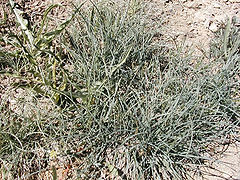Festuca idahoensis: Difference between revisions
Created page with '{{SPlantbox |familia=Poaceae |genus=Festuca |species=idahoensis |habit=grass |habit_ref=Flora - A Gardener's Encyclopedia ISBN 0881925381 |Max ht box=15 |Max ht metric=in |heigh…' |
No edit summary |
||
| Line 1: | Line 1: | ||
{{SPlantbox | {{SPlantbox | ||
|familia=Poaceae | |familia=Poaceae | ||
|genus=Festuca | |genus=Festuca | ||
|species=idahoensis | |species=idahoensis | ||
|common_name=Idaho Fescue | |||
|name_ref=Wikipedia | |||
|habit=grass | |habit=grass | ||
|habit_ref=Flora - A Gardener's Encyclopedia ISBN 0881925381 | |habit_ref=Flora - A Gardener's Encyclopedia ISBN 0881925381 | ||
| Line 21: | Line 23: | ||
|usda_ref=Flora - A Gardener's Encyclopedia ISBN 0881925381 | |usda_ref=Flora - A Gardener's Encyclopedia ISBN 0881925381 | ||
|max_zone=8 | |max_zone=8 | ||
|image= | |image=Festucaidahoensis1.jpg | ||
|image_width=240 | |image_width=240 | ||
}} | }} | ||
'''''Festuca idahoensis''''' is a species of [[Poaceae|grass]] known by the common names '''Idaho fescue''' and '''blue bunchgrass'''. It is native to western North America, where it is widespread and common. It can be found in many ecosystems, from shady forests to open plains grasslands. | |||
This [[fescue]] is a densely-clumping long-lived perennial grass with stems from about 30 to 80 centimeters in height.<ref>''Jepson Manual''. 1993</ref> The stiff, short, rolling leaves are mostly located near the base of the tuft. The [[inflorescence]] has hairy spikelets which produce large [[Awn (botany)|awned]] fruits. The root system is thick and penetrates deeply into the soil. The roots have symbiotic [[mycorrhiza]]e. There are no [[rhizome]]s; the plant reproduces from seeds and from budding with [[Tiller (botany)|tillers]]. | |||
This is a nutritious and preferred forage grass for wild and domestic animals. Typical native grass associates in the far west [[coastal prairie]]s are ''[[Danthonia californica]], [[Deschampsia caespitosa]] and ''[[Nassella pulchra]]''.<ref>C. Michael Hogan. 2009</ref> | |||
Cultivars, such as "Siskiyou Blue," are produced in the [[horticulture]] industry for [[landscape design]] and [[garden]] use. <ref>http://nativeson.com/annotated_catalog/grasscatalog.htm - access date: 6/9/2010</ref> | |||
==Cultivation== | ==Cultivation== | ||
Latest revision as of 16:51, 22 July 2010
| Festuca idahoensis subsp. var. | Idaho Fescue | |||||||||||||||||||||||||||||||||||||||||||||||||||||||
|---|---|---|---|---|---|---|---|---|---|---|---|---|---|---|---|---|---|---|---|---|---|---|---|---|---|---|---|---|---|---|---|---|---|---|---|---|---|---|---|---|---|---|---|---|---|---|---|---|---|---|---|---|---|---|---|---|

|
|
| ||||||||||||||||||||||||||||||||||||||||||||||||||||||
| ||||||||||||||||||||||||||||||||||||||||||||||||||||||||
Festuca idahoensis is a species of grass known by the common names Idaho fescue and blue bunchgrass. It is native to western North America, where it is widespread and common. It can be found in many ecosystems, from shady forests to open plains grasslands.
This fescue is a densely-clumping long-lived perennial grass with stems from about 30 to 80 centimeters in height.[1] The stiff, short, rolling leaves are mostly located near the base of the tuft. The inflorescence has hairy spikelets which produce large awned fruits. The root system is thick and penetrates deeply into the soil. The roots have symbiotic mycorrhizae. There are no rhizomes; the plant reproduces from seeds and from budding with tillers.
This is a nutritious and preferred forage grass for wild and domestic animals. Typical native grass associates in the far west coastal prairies are Danthonia californica, Deschampsia caespitosa and Nassella pulchra.[2]
Cultivars, such as "Siskiyou Blue," are produced in the horticulture industry for landscape design and garden use. [3]
Cultivation
Propagation
Pests and diseases
Varieties
Gallery
-
photo 1
-
photo 2
-
photo 3
References
- ↑ Jepson Manual. 1993
- ↑ C. Michael Hogan. 2009
- ↑ http://nativeson.com/annotated_catalog/grasscatalog.htm - access date: 6/9/2010
External links
- w:Festuca idahoensis. Some of the material on this page may be from Wikipedia, under the Creative Commons license.
- Festuca idahoensis QR Code (Size 50, 100, 200, 500)
